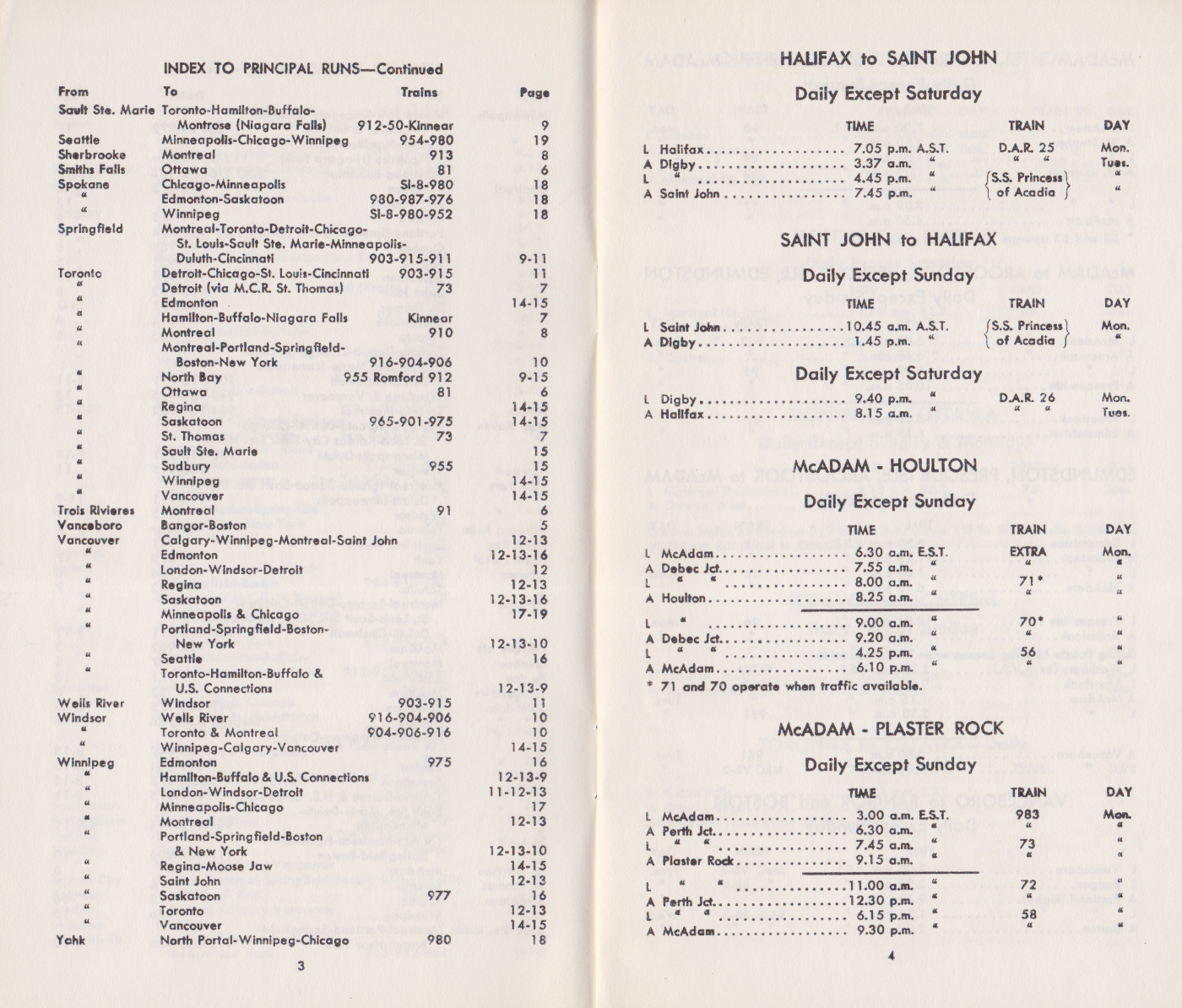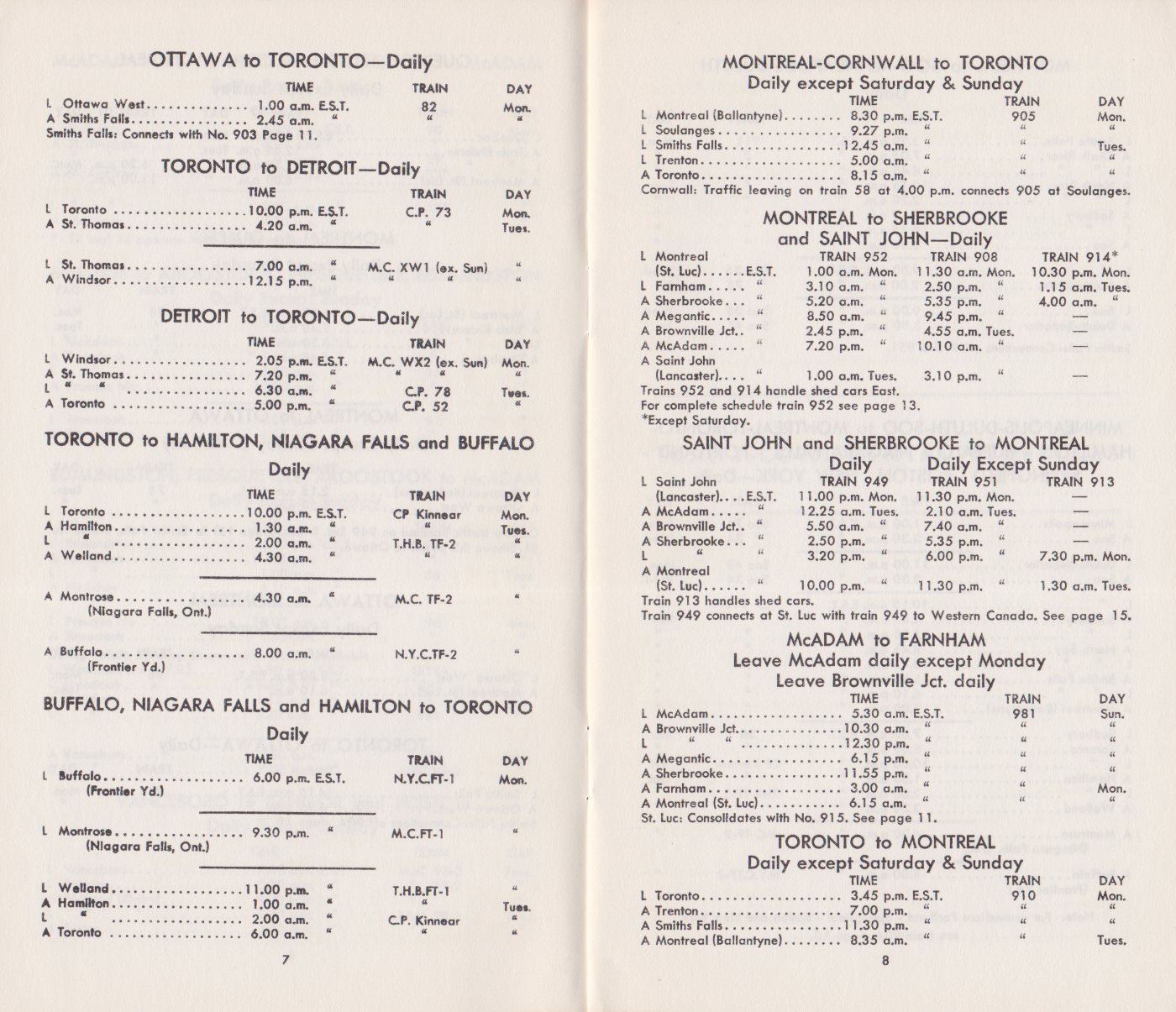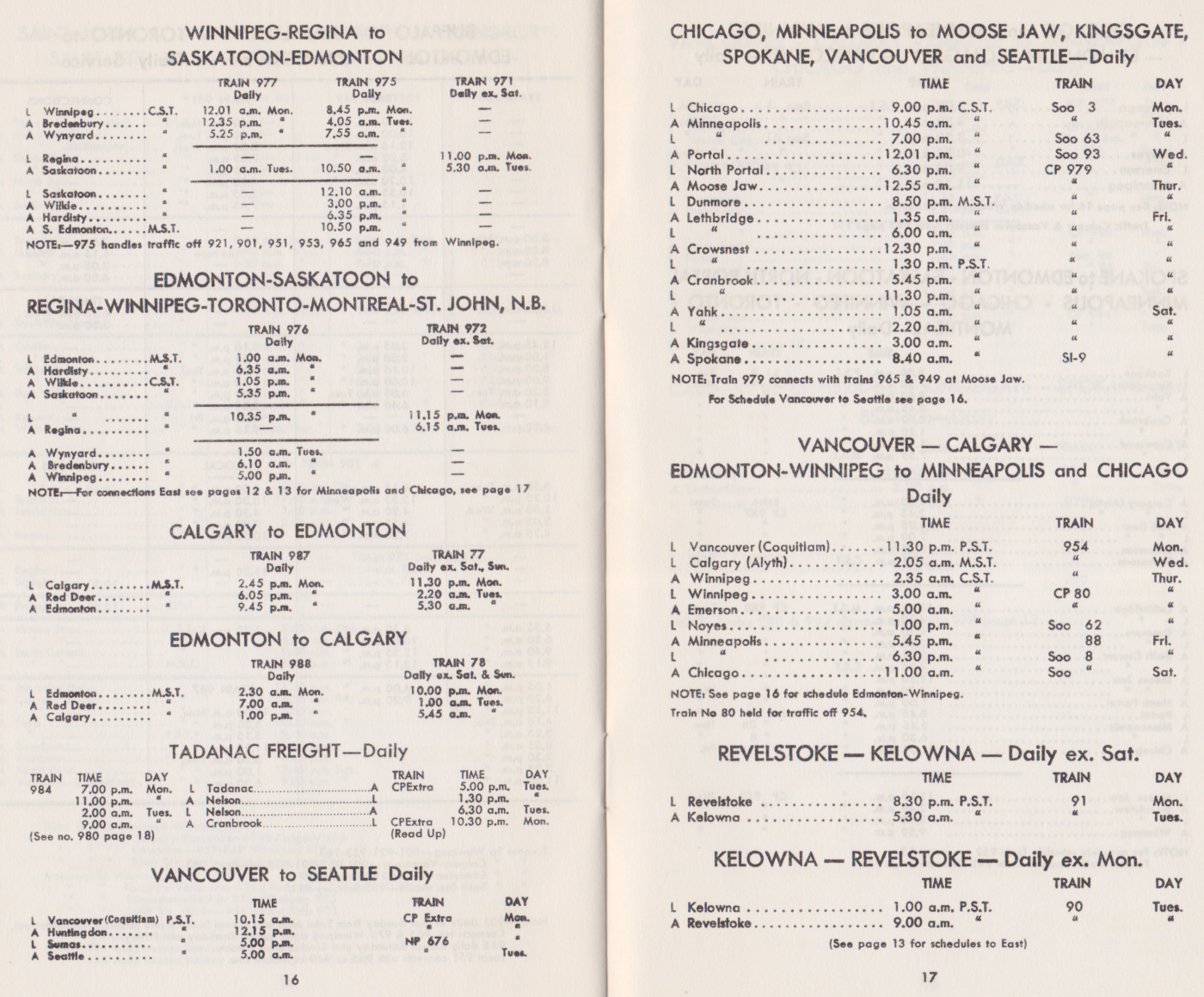A photo of a 'fast freight' from the early spring of 1969. An engineer on a westbound CPR freight is putting on a show for a small band of railfans who are visiting my usual trainwatching spot north of 40th Avenue Lachine. Westbounds passed here at a good clip and the warm diesel fuel mist coming out of the stacks is an unusual confection for the photographers' benefit.
Car control computers were in use by the time this schedule was published. At crew change points, several teletype terminals might be present, using code-punched paper tape (essentially 'ticker tape') - a medium providing 'temporary local data storage' of a train's consist. A complete train's tape would be wound in a neat figure-8 on the operator's thumb and pinkie finger, and carefully cinched in the middle with the tail of the paper tape end or an elastic. The local 'off-line database' was a board with train-number-labelled wooden pegs, on which the figure-8s were hung.
(To see a few articles showing this and older CPR car control systems type Bob Mura into the search box at the top of this page and press 'return'.)
... As trains were broken up or assembled, segments of tape (representing blocks of cars) could be fed into the teletype terminal's tape reader ... in the appropriate consist-sequence ... so that a new consist could be registered with the central computer. Then users could print a wheel report on tractor-feed paper for those employees needing one.
Whether they were using a purely manual system, or the newer teletype/tape system, one must admire the experienced headquarters and divisional car control clerks, machine operators and other staff who had a mental model of how the CPR's complex freight routing system worked. Here is an quick overview of the sections inside this booklet:
Pages 1-3: A listing of the various runs, sorted by city of origin, providing train number(s) for the run.
Pages 4-9: Local trains, listed from east to west.
Pages 10-19: Transcontinental trains, but also including western and US local runs.
Page 20: A summary of CPR freight cars by type
This list includes archaic types (in 2023) such as: standard refrigerator cars (using ice); automobile boxcars (using the Evans Device to winch the first 2 of 4 automobiles carried per car into the upper corners); and livestock cars. The principal stock feeding stations are recorded as Winnipeg and White River (Page 13).
Page 22: A list of Canadian and US freight offices.














